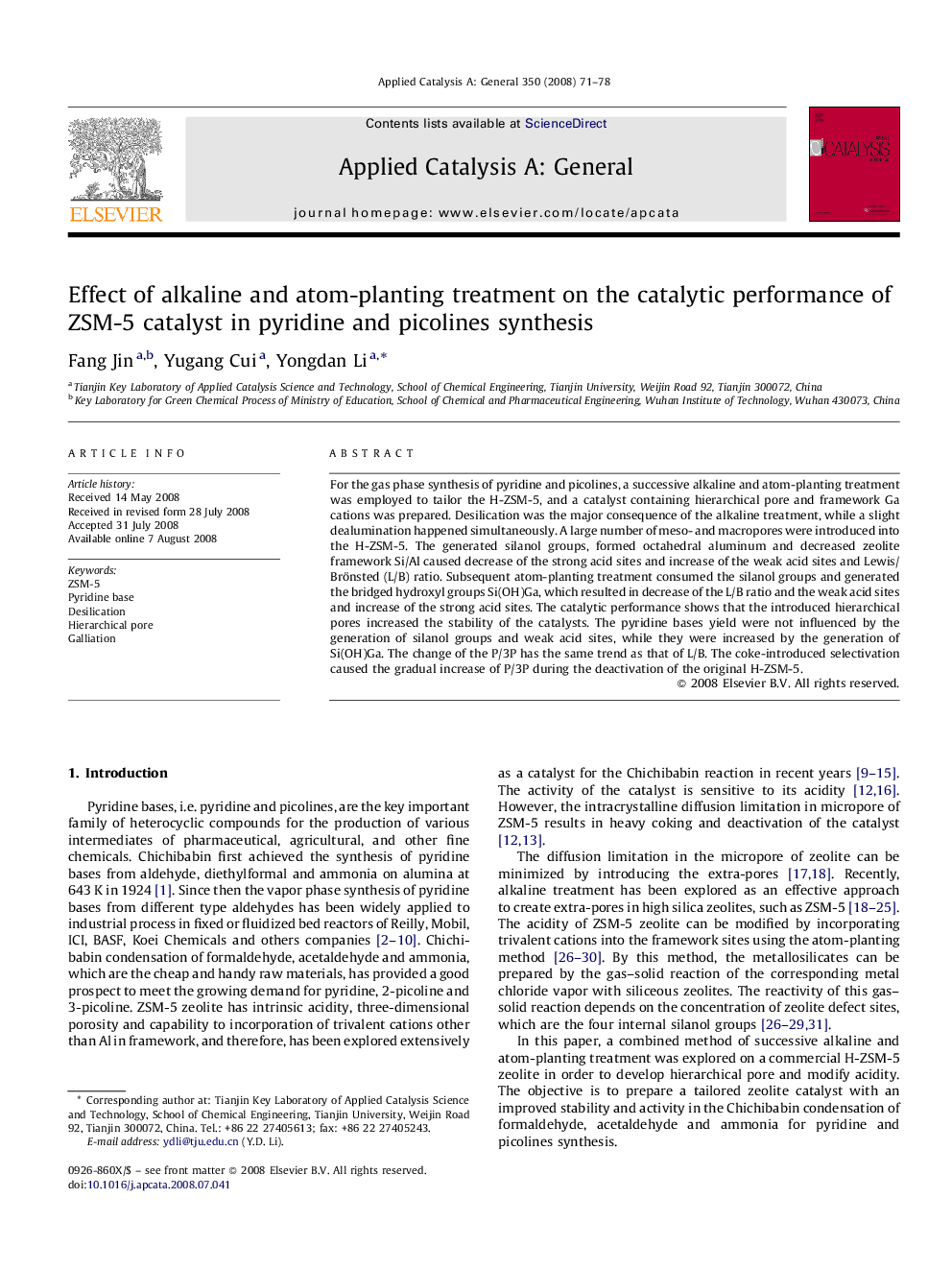| Article ID | Journal | Published Year | Pages | File Type |
|---|---|---|---|---|
| 43385 | Applied Catalysis A: General | 2008 | 8 Pages |
For the gas phase synthesis of pyridine and picolines, a successive alkaline and atom-planting treatment was employed to tailor the H-ZSM-5, and a catalyst containing hierarchical pore and framework Ga cations was prepared. Desilication was the major consequence of the alkaline treatment, while a slight dealumination happened simultaneously. A large number of meso- and macropores were introduced into the H-ZSM-5. The generated silanol groups, formed octahedral aluminum and decreased zeolite framework Si/Al caused decrease of the strong acid sites and increase of the weak acid sites and Lewis/Brönsted (L/B) ratio. Subsequent atom-planting treatment consumed the silanol groups and generated the bridged hydroxyl groups Si(OH)Ga, which resulted in decrease of the L/B ratio and the weak acid sites and increase of the strong acid sites. The catalytic performance shows that the introduced hierarchical pores increased the stability of the catalysts. The pyridine bases yield were not influenced by the generation of silanol groups and weak acid sites, while they were increased by the generation of Si(OH)Ga. The change of the P/3P has the same trend as that of L/B. The coke-introduced selectivation caused the gradual increase of P/3P during the deactivation of the original H-ZSM-5.
Graphical abstractA successive alkaline and atom-planting treatment was employed for tailoring a commercial H-ZSM-5 to produce a catalyst for the gas phase synthesis of pyridine and picolines. Alkaline and atom-planting treatments result in the desilication and galliation, respectively. The hierarchical pores generated by desilication increased the stability of the catalyst, and the subsequent galliation increased the pyridine bases yield. Figure optionsDownload full-size imageDownload as PowerPoint slide
